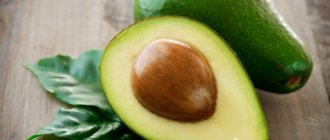The homeland of pomegranate is considered to be South-West Asia. Now it is grown in the Caucasus, the Middle East, Africa, some regions of Asia and the Mediterranean. In the northern hemisphere, the season lasts from September to February. The new harvest begins to arrive at markets and storefronts in the second half of autumn.
In order for the product to remain fresh, aromatic and healthy for a long time, it is important to properly store pomegranates at home. The shelf life of a fruit is affected by conditions, storage location, and its variety. It is equally important in what form to store the fruit: peeled or peeled.
Rules for storing pomegranate in the refrigerator
Firstly, the keeping quality of the fruit depends on what kind of pomegranate you got. Thus, you need to be able to choose them correctly. What is worth paying attention to? This is of course its size.
Ideally, they should be at least ten centimeters in diameter.
- Heavier fruit will be ripe and juicy.
- It is better to focus your attention on grenades weighing over half a kilo.
- The peel should be matte, without any damage or defects.
- The ripeness of a pomegranate can be determined by knocking on it. The presence of a metallic sound indicates its maturity.
To buy pomegranates in large quantities, you should choose November. After all, it is during this period that they are brought from neighboring countries. This means that they are not transported for long on the way, so the risk of them being damaged is reduced to zero. This suggests that such fruits will be fresher and more ripe.
It is advisable to store the fruit in a cool, dark place where the room humidity is moderate. These include basement rooms, a cellar, a refrigerator, and any other room.
The best temperature for storage will be from one to ten degrees Celsius. If the humidity is low, the pomegranate will dry out, and if the humidity is high, it will rot. It is necessary to find a “golden mean”.
Pomegranate juice
How and for how long to store pomegranate juice? Let's consider this issue using the example of a store-bought product with preservative additives and an all-natural homemade drink.
Storing pomegranate juice in a glass container or in a foil paper bag is possible for the period specified by the manufacturer.
It is better to consume a freshly pressed product immediately or, at most, within half an hour, while it contains the largest amount of vitamins and amino acids.
Storing freshly squeezed pomegranate juice is only possible in the refrigerator for the next 24 hours. The container should be tightly covered with a lid to minimize contact of the drink with air.
After opening store-bought juice in a glass bottle, it can be stored for no longer than 2 to 3 days.
Choosing grenades for storage
If the pomegranate crop was harvested correctly, the fruits will be preserved for a long time at home throughout the year. When choosing fruits, you need to consider some facts:
- Ripe fruit will have a metallic sound when tapped;
- If you squeeze it, a crunch should appear;
- It should be heavy and hard to the touch;
- Absence of any defects - dents, scratches, stains, etc.;
- The pomegranate peel should be reddish in color, with occasional orange speckles;
- The fruit must weigh at least five hundred grams;
- The quality of the fruit directly depends on its size.
It is also worth paying attention to the price; if it is low, this indicates that the product is spoiled or even the taste of the fruit. It will be extremely difficult to preserve such grenades, even if all the necessary requirements are met.
How to properly peel a pomegranate
There are many ways to clean a pomegranate. This is due to the complexity of the structure of the fruit: under the thick and durable skin there are thin and fragile nucleoli, which, if handled carelessly, quickly burst and stain everything around.
Note. Pomegranate juice has a strong coloring effect. Leaves hard-to-remove bright marks not only when it gets on clothes, but also on the skin of your hands.
Method for cleaning pomegranate:
- A well-washed pomegranate is placed on a cutting board.
- Using a knife, cut off the base of the fruit and cut it into 4 parts.
- The resulting quarters are placed in a container filled with water.
- Separate the grains from the peel with your hands.
- The film and white dense “partitions” inside the fruit are removed.
- After complete cleansing, wash the grains with clean water.
The advantage of this method is that it minimizes the amount of juice flowing to the surface. Since pomegranate kernels are heavy, when cleaned in water they sink to the bottom of the container, and the lighter parts (film and porous crust) float to the top. This allows you to quickly separate the edible parts from the “garbage”.
Storing pomegranate at room temperature
Preserving fruits in an apartment at room temperature is quite possible. A clay mash will help with this. This is done as follows. The best fruits are selected and then the mash is prepared.
- Take white clay, calcined in the oven. Then it is diluted to the state of thick sour cream using ordinary water.
- Each fruit is carefully lowered into the clay and then set aside until it dries.
- A day later, the procedure must be repeated. This is done until the pomegranate is completely covered with clay.
Finally, the crown is filled with clay. After this, the fruits are put into a box and then moved to a dry place. This way you can preserve the fruits for five months.
Balcony or cellar
At +7C -+10C, pomegranate fruits can be stored for up to 2.5 months in conditions of moderate humidity (75 - 80%). At +1C the storage time increases to 5 – 7 months.
At room temperature, the fruits dry out quickly and lose their juiciness within a week.
You can keep your supplies in the cellar or on a glazed balcony if it does not freeze in winter. The fruits are stored in boxes in one layer. Each of them is first wrapped in paper. To cover them from light, use thick burlap or cardboard.
The condition of the useful product should be checked regularly. If necessary, replace the paper with dry paper.
How long can they be stored?
Storage should be carried out at an air temperature of one to ten degrees Celsius. Do not forget that humidity should be moderate. You can choose several options for storage - room, refrigerator, freezer.
In the apartment
If the temperature varies from 18 to 24 degrees Celsius, then in such conditions the pomegranate can be preserved for seven to ten days, after which it will begin to dry out.
- Having carefully selected the fruits, you can prepare them for storage.
- To do this, they are wrapped in paper and sent to a cool place.
- In an apartment this could be a refrigerator, a glassed-in loggia, a basement, a cellar, a corridor at the entrance without heating in a private house.
If the room temperature is kept between zero and two degrees Celsius, they can remain safe and sound for up to nine months. Those varieties that contain more acid will last longer than those fruits that contain a lot of sugar.
In a refrigerator
If the choice fell on the refrigerator, then it is best to store them in the compartment for fruits and vegetables. In this case, they will be able to lie there from one month to two. To achieve this, they must be wrapped in clean paper or, if available, in parchment.
Every week it is worth checking them for the presence of spoiled fruits, if detected, they should be removed immediately.
In the freezer
Here, it is not the fruits themselves that will be preserved, but their grains. It is not advisable to freeze whole fruits; they will not take up much space.
- Cured grains stored in tightly sealed containers can be stored for six to nine months.
- Just don't keep them there as much as possible. It is better to eat what is in the camera, and then, if possible, replenish the reserves with fresh fruit.
- You need to put the grains in small portions into bags. Defrost at room temperature.
The fruits are perfectly preserved and do not lose a bit of their taste.
Where is the best place to store grenades?
It is best to store pomegranates in winter in a cool, dry place. This is the fundamental principle by which you need to choose the optimal place for the “wintering” of fruits.
Where to store unpeeled pomegranate
Clean, dry boxes are suitable as containers for storing fruit in natural conditions (cellar, insulated loggia). It is better to cover the bottom with paper so that the moisture that may appear on the fruit in small quantities has somewhere to be absorbed. Additional measures can be taken. Wrap each fruit in a clean piece of paper. This way there will be no chance for moisture to persist, accumulate and give rise to the process of rotting.
The bottom of the box must be covered with paper.
Where to store peeled pomegranate
In addition to the refrigerator compartment, you can also use the freezer compartment. When deep frozen, fruit can be stored for more than a year. In this way it is good to store those fruits that could not be preserved in other ways. For example, one fruit is rotten. It needs to be peeled, sorted, damaged areas removed and placed in a container (bag) for freezing.
We extend the shelf life
In order to enjoy pomegranate in the summer, it must be preserved. To do this, each fruit is wrapped in paper and put away in a cool place. From time to time they should be checked for integrity.
- If storage will be carried out on a loggia, then the wrapped fruits are placed in a box.
- They must be covered with a rag or cardboard on top. This will protect them from ultraviolet radiation.
- This way you can preserve the fruit for five months. In its purified state it has a limited shelf life.
- If it was stored in the refrigerator in this form, then it will need to be eaten within four days.
If you want to enjoy the taste of pomegranates in spring and summer, you should think about their preservation. They can be stored in many places, where the shelf life will vary.
In order to preserve the fruits for as long as possible, they must be constantly checked. If a spoiled fruit appears, it is thrown away. Fruits that will be stored for a long time will remain just as tasty and healthy.
How long can pomegranate be stored?
Peeled pomegranates, packed in plastic bags and sent to a freezer equipped with a nofrost system, can be stored the longest - a year or more. If properly cared for, whole fruits will last in the refrigerator for up to 6-7 months: sweet varieties for a month or more, sour varieties for at least six months.
It is not recommended to store cut fruit for a long time. Within a few days it loses its original freshness and dries out. It is advisable to consume damaged fruits with dents, cracks and other defects as soon as possible. Garnets enclosed in a clay shell can last 4-5 months in suitable conditions.
Photo of proper storage of pomegranate fruit
What are the benefits of pomegranate for the body?
- Pomegranate peel helps get rid of parasites, including worms. The juice and roots of the plant are effectively used against them.
- Pomegranate fruits contain cobalt, magnesium, iron, phosphorus, calcium and potassium.
- The fruits are often prescribed by nutritionists. Used in the manufacture of various seasonings, salads, sauces, and drinks.
- Fruit juice helps reduce stomach pain. Improves the patient's appetite. They have antiseptic and anti-inflammatory qualities and have a choleretic and diuretic effect.
- The fruits contain a high content of healthy sugars, vitamins C, A, PP, B, phytoncide, tannin and tannins.
- The peel is an excellent medicine against dysentery.
The fruit has excellent shelf life, which allows you to store juicy fruits at home for a long time. Thus, their taste can be enjoyed throughout the winter without the risk of acquiring unripe fruits. However, to preserve the fruits in optimal condition, you should follow the basic rules regarding their storage.
Ways to preserve the harvest until spring
The problem of how to store pomegranate at home can be solved. The fruit is an inhabitant of the subtropics, so you need to create a “native”, soft regime for it.
Refrigerator storage
You can choose this storage method if the refrigerator provides a positive temperature (2-9°C) and a humidity of 70-75%:
- Washed and dried ripe specimens should be placed in the “fruit” compartment. Under-dried pomegranates will begin to mold.
- Each fruit is wrapped in parchment paper - freshness will last longer. Plastic bags, even unsealed, are not suitable. During storage, moisture will still appear inside and the pomegranates will spoil.
- The presence of “neighbors,” including vegetables, does not affect the condition of exotics.
With these parameters, the shelf life of ripe fruit is two to three months.
Freezer
This method is suitable if you need to maximize the shelf life of fruits. The freezer will preserve their condition from several months to a year. However, you should not freeze ripe pomegranates entirely:
- the fruits are bulky and “steal” a lot of space;
- cleaning takes a long time and is troublesome;
- When defrosting, due to temperature changes and skin pressure, the grains burst and the juice flows out.
It is worth choosing a different method. The fruit is cleaned, the grains are sorted, removing spoiled or suspicious ones (this is indicated by the color of the grains). The remaining berries are rinsed, dried, placed in a bag or plastic container, and stored in the freezer.
The disadvantage of freezing is the partial loss of vitamins from pomegranate. But you don’t need to clean anything; the bag or container takes up less space. And this is the only way to preserve berries if ripe fruits begin to rot.
Clay for preserving fruits
If there is no refrigerator or basement, fruits are stored in a heated apartment. Regular clay will help. It is better to choose a white variety from a pharmacy or hardware supermarket:
- Since we are talking about food, it needs to be heated (in the oven or over a fire).
- Then the clay is diluted with warm water to the consistency of sour cream.
- Washed and dried fruits are immersed in the clay mixture with the upper part (where the crown is), removed and left to dry. If the clay “cocoon” is thin, the procedure must be repeated the next day.
- When the second layer dries, the mixture is poured over the “crowns” of the fruit.
- Dried pomegranates are stored in a box, box or on a shelf. Cover with natural fabric or cardboard.
In the clay “cocoon” only the pomegranate skin dries out. The juiciness and aroma of the grains and other beneficial properties of the fruit are preserved. In a moderately dry room it will last up to six months. This method should be chosen for storing unripe pomegranates (they will gradually ripen). But the fruits need to be whole: they should not have cracks, dents, or other damage.
Cellar
It is better to allocate a dry, cool underground floor in the house for storing pomegranates. Humidity, temperature and shelf life are similar to refrigerator. Every six months, the fruit in the cellar is “inspected” for spoilage or other problems. Fruits that have begun to rot must be separated from the rest so that the spoilage does not spread to them. In the cellar, pomegranates are laid out on shelves or placed in boxes in one layer, spaciously, with gaps between the fruits.
Balcony, loggia
If the climate or microclimate allows, it is rational to choose a balcony or loggia for storing ripe exotics. Suitable containers for containers are boxes or boxes:
- the bottom of the container is lined with hygroscopic (moisture-absorbing) fabric;
- each fruit must be wrapped in paper (plain or parchment);
- Laying in only one or two layers is allowed: pomegranates piled on top of each other will burst;
- The top of the fruit is covered with cardboard or other light-proof material.
Under such conditions, ripe pomegranate is stored for a couple of months.
Useful tips
The following tips will help keep pomegranates fresh longer:
- Wrap the fruit in parchment to preserve its juiciness and prevent rotting from moisture accumulation.
- Place the pomegranates in the box in one layer. This will provide ventilation, uniform humidity and make it easier to access them to monitor their condition.
- Avoid sudden temperature changes or drops to 0°C.
- Check your supplies regularly to identify fruits that have begun to spoil and remove them promptly.
- Store fruits of different sizes separately.
Main selection criteria
In order for the fruits to last as long as possible without drying out, rotting or molding, it is recommended to carefully select them. When purchasing, you need to pay attention to the following factors:
- Weight and size - good fruits should be at least ten centimeters in diameter and quite heavy in weight. As a rule, a fully ripe average fruit weighs 400-450 grams, and a lower weight indicates that the grains have already begun to dry out.
- The quality of the peel, which should be thin, covering the grains filled with juice. The color should be rich red, but depending on the variety, a pink tint or the presence of a small amount of orange spots is allowed. The matte surface should be dry, hard, similar to the thinnest tree bark.
- The crown or “crown” must be dry, framed by dry brown sepals. An elastic, unopened “crown” indicates immaturity, which reduces preservation.
- Tactile sensations are an important nuance that allows you to select ripe fruits that are ideal for long-term storage. When pressed, they should crack under your fingers, which indicates that the grains are already completely filled with juice. Additionally, you should tap the peel, and if you hear a ringing sound similar to metal, then the pomegranate is ripe.
- Integrity, which must be perfect, and even the slightest scratches, not to mention rotten or moldy areas, are grounds for rejection.
It should be noted that sour varieties have the longest shelf life, while sweet varieties can be stored for no more than five months. The best time to purchase is considered to be mid-November, since it is by this time that foreign pomegranates ripen and hit domestic shelves.
In the freezer
The longest shelf life can be achieved by freezing. Its duration depends on the degree of ripeness, variety and initial condition of the fruit. Fruit lasts in the freezer for about 12 months. This is a good way to preserve spoiled grenades with signs of rot. Before freezing, the fruit must be cleaned and spoiled grains removed. Place the rest in a bag and put it in the freezer. In addition, in this form, pomegranate takes up much less space than whole fruits.
Optimal storage conditions for pineapples
How to store bananas?
What criteria should you use to choose an iron for your home?











